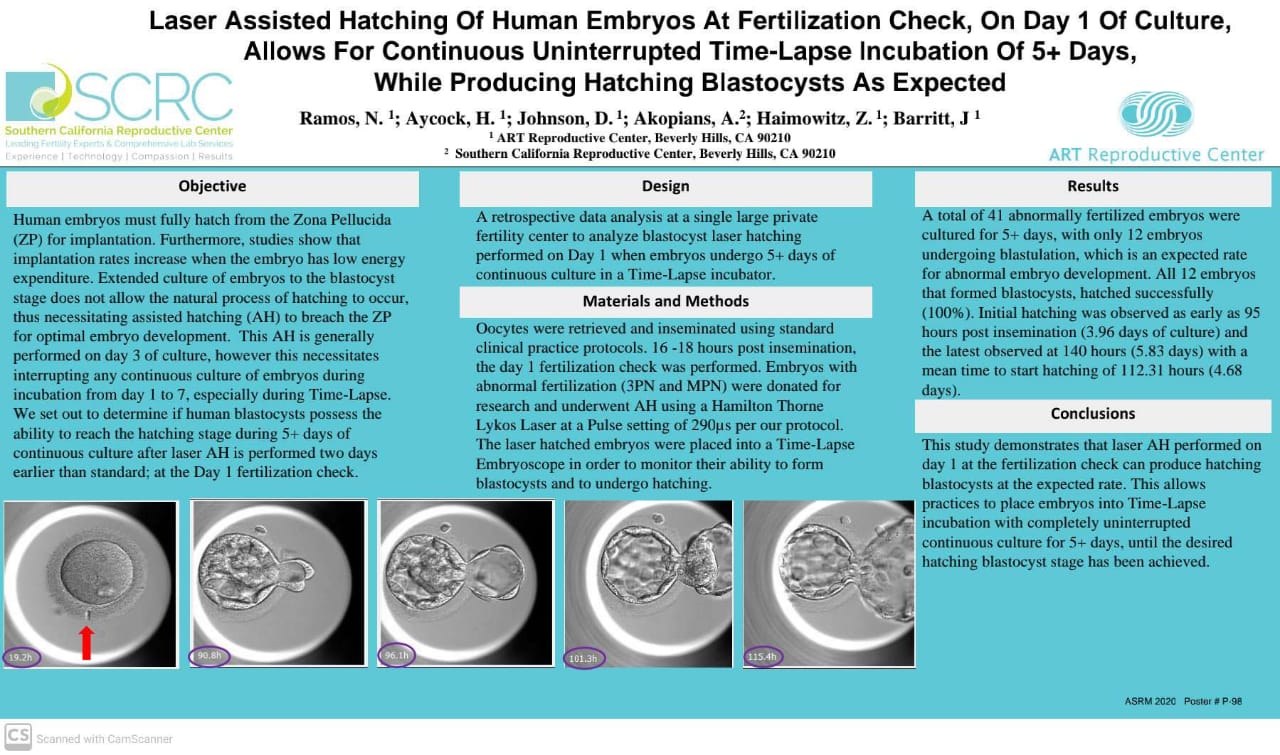Track: ART – LAB, Assisted Reproductive Technology
Poster : ART Lab: Technology
Hannah Virginia Aycock
Embryologist
ART Reproductive Center
Beverly Hills, California
Objective: Human embryos must fully hatch from the Zona Pellucida (ZP) for implantation. Furthermore, studies show that implantation rates increase when the embryo has low energy expenditure. Extended culture of embryos to the blastocyst stage does not allow the natural process of hatching to occur, thus necessitating assisted hatching (AH) to breach the ZP for optimal embryo development. This AH is generally performed on day 3 of culture, however this necessitates interrupting any continuous culture of embryos during incubation from day 1 to 7, especially during Time-Lapse. We set out to determine if human blastocysts possess the ability to reach the hatching stage during 5+ days of continuous culture after laser AH is performed two days earlier than standard; at the Day 1 fertilization check. DESIGN: A retrospective data analysis at a single large private fertility center to analyze blastocyst laser hatching performed on Day 1 when embryos undergo 5+ days of continuous culture in a Time-Lapse incubator. MATERIALS AND
Methods: : Oocytes were retrieved and inseminated using standard clinical practice protocols. 16 -18 hours post insemination, the day 1 fertilization check was performed. Embryos with abnormal fertilization (3PN and MPN) were donated for research and underwent AH using a Hamilton Thorne Lykos Laser at a Pulse setting of 290µs. The laser hatched embryos were placed into a Time-Lapse Embryoscope in order to monitor their ability to form blastocysts and to undergo hatching.
Results: A total of 41 abnormally fertilized embryos were cultured for 5+ days, with only 12 embryos undergoing blastulation, which is an expected rate for abnormal embryo development. All 12 embryos that formed blastocysts, hatched successfully (100%). Initial hatching was observed as early as 95 hours post insemination (3.96 days of culture) and the latest observed at 140 hours (5.83 days) with a mean time to start hatching of 112.31 hours (4.68 days).
Conclusions: This study demonstrates that laser AH performed on day 1 at the fertilization check can produce hatching blastocysts at the expected rate. This allows practices to place embryos into Time-Lapse incubation with completely uninterrupted continuous culture for 5+ days, until the desired hatching blastocyst stage has been achieved.
ASMR official sponsorship in the publications of the virtual ASMR conference October 17-21 October 2020

